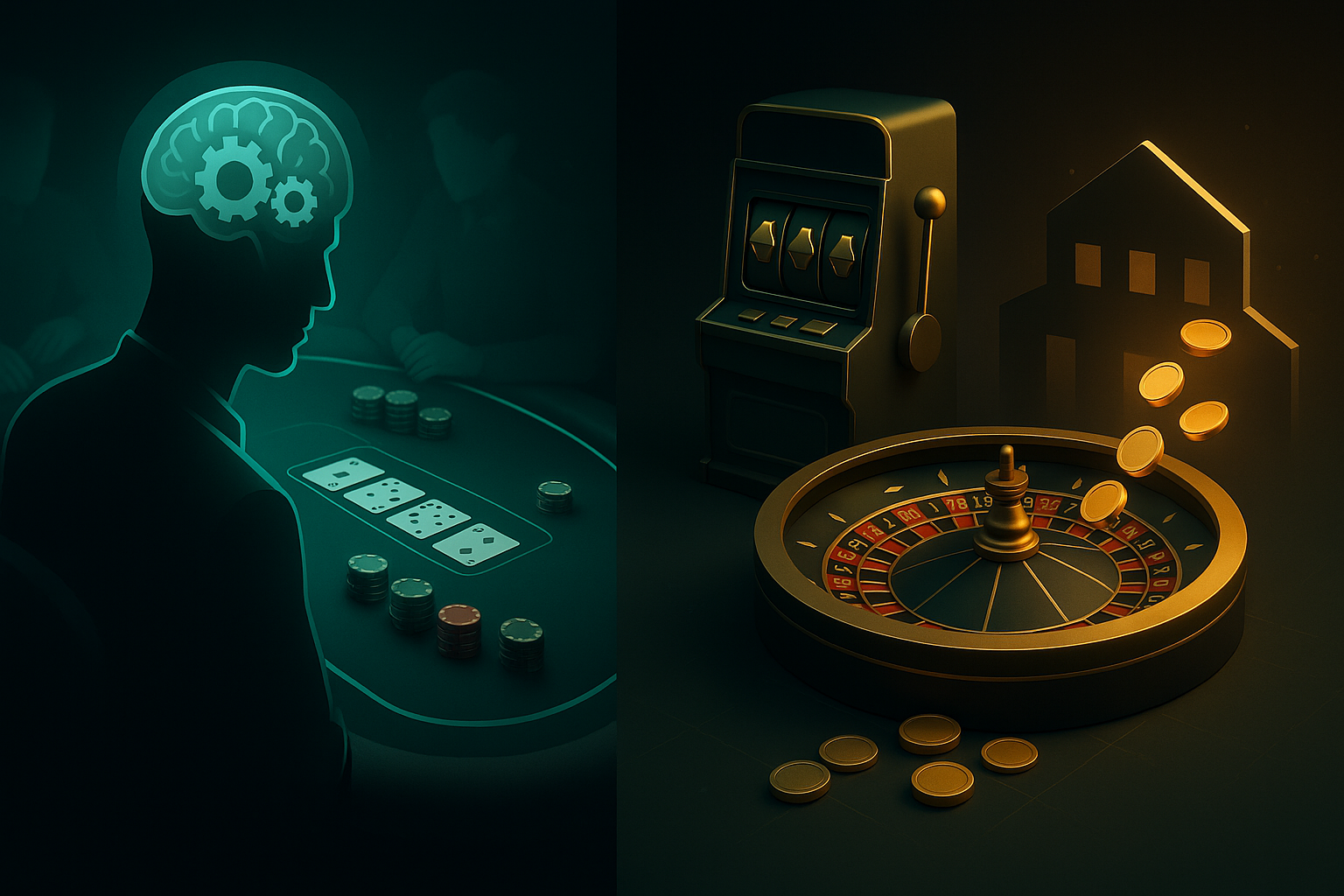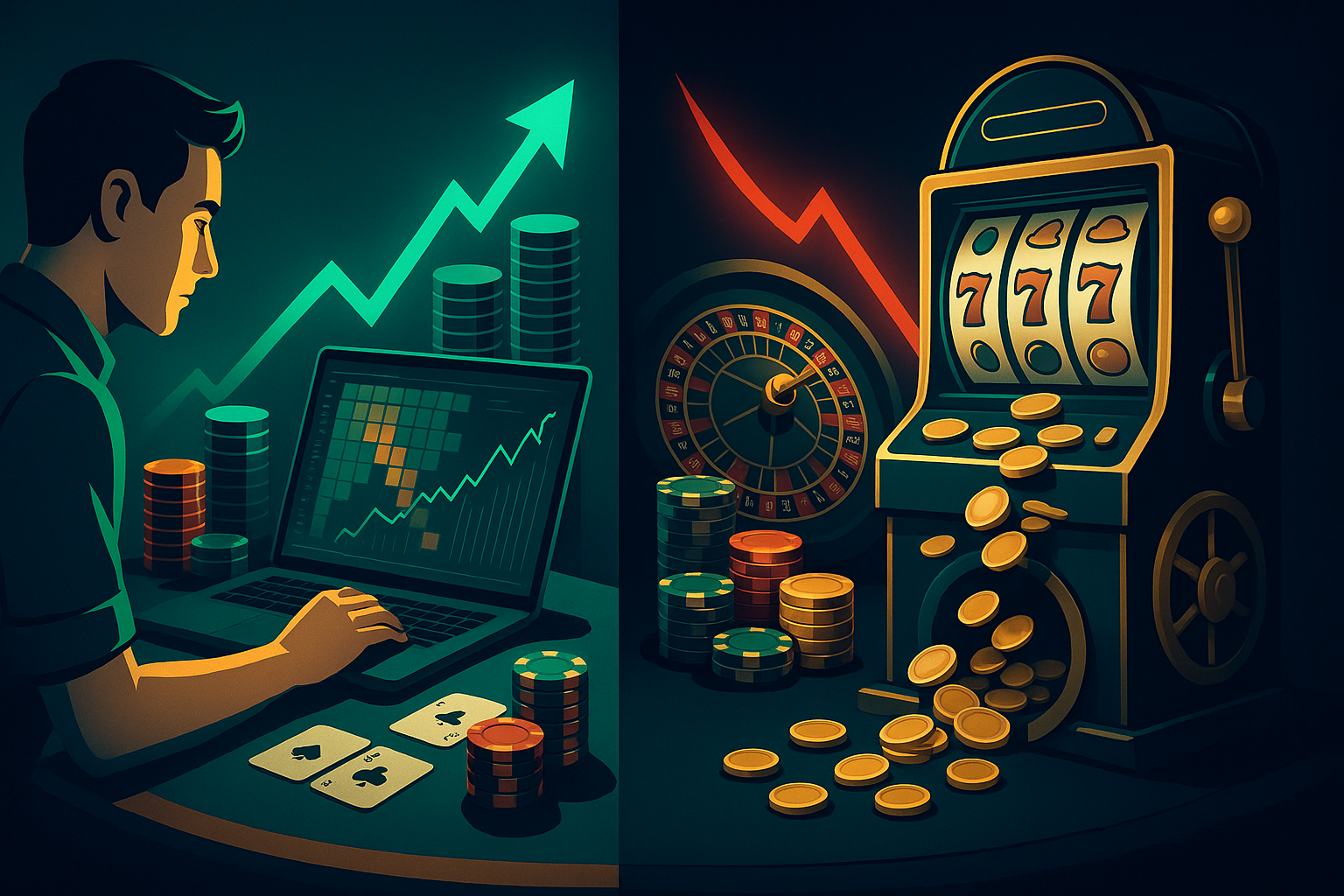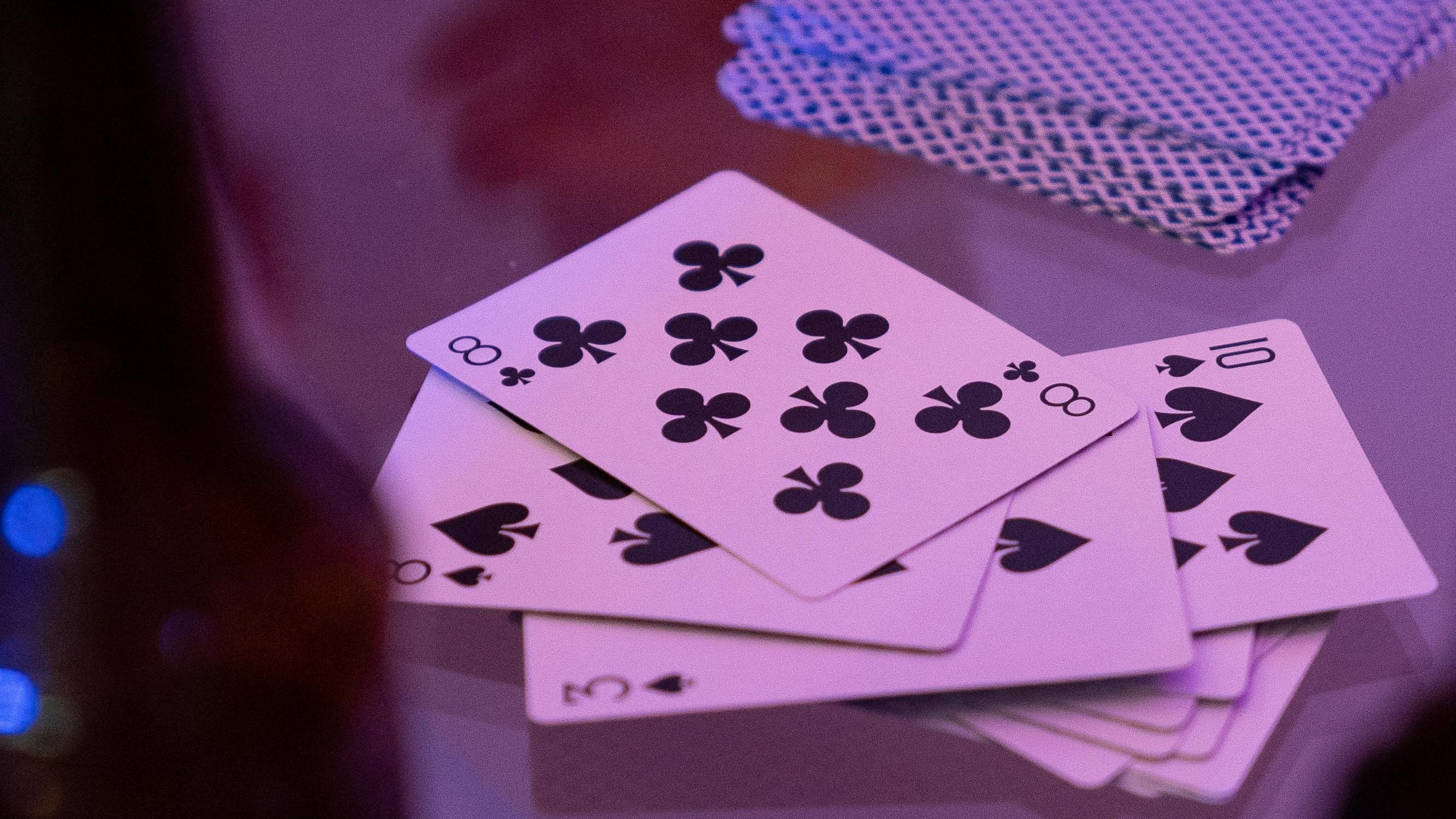What Is ROI in Gambling?
ROI in gambling isn’t just about one good night at the table. It’s measured over thousands of hands or spins, where the law of large numbers kicks in. Skilled players don’t rely on luck. They rely on minimizing variance and maximizing edge. That edge can be razor-thin, but when scaled up, it tells you exactly how well you’re doing compared to the house.
In poker, ROI is calculated as total profit divided by total investment (buy-ins). In casino games, it's essentially baked into the RTP, which represents the percentage of total wagers a game returns to players over time.
Online Casino Surge in the U.S. – A Neutral Playing Field?
Online casino adoption in the U.S. is surging. States like New Jersey, Pennsylvania, and Michigan now feature regulated platforms offering everything from live dealer blackjack to virtual slots with detailed RTP disclosures. The competition has forced many platforms to publish higher RTP games, sometimes topping 97%. This brings casino gaming closer to poker in terms of long-term feasibility for savvy players, especially those chasing comps or loyalty rewards.
The rise of regulated sites also makes it easier to filter reliable platforms. Most player-focused portals rank the top 10 online casinos based on game fairness, payout speed, and bonus value. For players who stick to games like blackjack with solid RTP, and use bonuses strategically, there's room for a pseudo-strategy. Still, no level of play can make blackjack +EV over the long haul without card counting, and online casinos shuffle too often for that to be effective.
Poker: A Skill Game Masquerading as Gambling
Unlike most casino games, poker isn’t played against the house. It’s played against other players. The casino merely takes a cut of each pot (rake), which means the house doesn’t care who wins but only that players keep playing.
This is what makes poker fundamentally different:
- Long-term ROI is determined by skill.
- There is no fixed RTP, because it depends on the ability of the player relative to others at the table.
Professional players can pull 20–30% ROI at low to mid-stakes online over thousands of hands. At higher stakes, it shrinks due to tougher competition. For live poker, a 10–15% ROI is still considered excellent. But poker also comes with brutal swings. Downswings of 20+ buy-ins are not uncommon, even for seasoned pros. That’s where bankroll management separates winners from the broke.

The Casino Side & Fixed RTP and Limited Control
Popular casino games like blackjack, roulette, or slots have one thing in common: the house always has an edge. Even if it's a small one.
Here’s a breakdown of typical RTPs:
- Roulette (American): ~94.74%
- Blackjack (perfect basic strategy): ~99.5%
- Baccarat (banker bet): ~98.94%
- Slots: Typically 92%–96%, though online slots sometimes go higher
- Craps (pass line bet): ~98.6%
These numbers look decent (especially blackjack) but the catch is that players can’t improve them much beyond what basic strategy allows. There’s no opponent to outsmart. The rules are fixed. The payout table is fixed. And so is the long-term outcome. You are, in essence, fighting the clock until the house edge eats your bankroll.
Variance can still work in your favor short term. Big wins are possible. But repeatable ROI? Only through volume discounts or casino rewards, not player decision-making.
Skill vs. Structure & The ROI Gap
Here’s the key difference:
- Poker ROI is elastic. A bad player has a negative ROI. A great player has a highly positive one. Skill moves the needle.
- Casino game ROI is capped. Even perfect play doesn’t beat the house long-term.
There’s also the question of effort. Poker demands work, including hand reviews, range study, and opponent profiling. It’s part game, part financial speculation. Casino games, in contrast, are plug-and-play. No study required. But that simplicity is costly. It costs you your edge.
Let’s use blackjack as the most “skillful” casino example. A player using perfect basic strategy reduces the house edge to roughly 0.5%. That means for every $1,000 wagered, the expected loss is $5. A solid poker player with a 10% ROI could expect $100 in profit from the same bankroll volume in tournaments. The gap is clear.

Variance and Volatility
Variance isn’t the enemy. Misunderstanding it is. In poker, variance is the price of admission for long-term profits. In casino games, it's the smokescreen that masks inevitable loss.
Poker variance is impacted by field size, game format, and play quality. Tournament players experience higher variance than cash game grinders. But variance has a ceiling. For winning players, it trends upward over time.
Casino variance is more brutal because outcomes are fixed. The only variable is how long it takes to lose. For example:
- A player spinning a 95% RTP slot with $1,000 will eventually lose around $50/hour assuming continuous play.
- In contrast, a poker player in a $1/$2 cash game could theoretically make $20/hour if their win rate is 10BB/hour.
Why Most Players Still Prefer Casino Games
Despite the long-term math, most players gravitate toward casino games. Why?
- Low cognitive effort
- Faster gratification
- Lower skill barrier
- Bonuses and jackpots
These games are designed for volume. They target users who want dopamine, not data. The average slot spin lasts 5–10 seconds. Compare that to a poker session requiring 6+ hours of focused play. Poker isn’t better for everyone, but it is better for ROI if skill is present.




